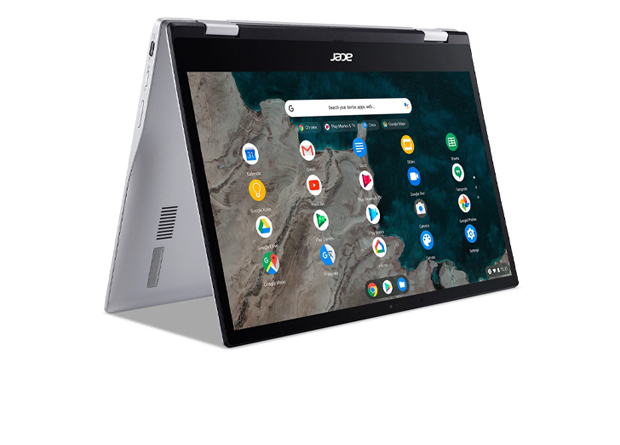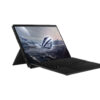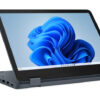Acer launched its first Chromebook powered by the Qualcomm Snapdragon 7c compute platform – the Acer Chromebook Spin 513 (CP513-1H/ CP513-1HL) and Acer Chromebook Enterprise Spin 513. The new models pair an ultraportable design with fast and efficient performance, long battery life and optional 4G LTE cellular connectivity.
“Acer is excited to bring to market our first Chromebooks powered by the Snapdragon 7c compute platform, with all the performance and efficiencies necessary to maximize the vast benefits of Chrome,” said James Lin, General Manager, Notebooks, IT Products Business at Acer. “As employees and students have shifted to working remotely and learning from home, Acer is responding with solutions that meet their needs – in this case, Chromebooks that are powerful enough to take on whatever the day brings with all-day battery life and highly secure cellular connectivity virtually anywhere.”
Optimized for Performance and Connectivity On-the-Go
The Acer Chromebook Spin 513 is powered by the Snapdragon 7c compute platform with an 8 nm octa-core Qualcomm Kryo 468 CPU, which provides enhanced multitasking and responsiveness. In addition, the integrated Qualcomm Adreno 618 graphics performance lets users enjoy online games and beautifully streamed video. Providing up to 14 hours of battery life, the new Chromebook can last for more than a full day of work or school.
The new Chromebook also comes with optional 4G LTE for an always connected experience. This ensures that users will still be able to access the web, their personal cloud, connected apps, extensions and more to stay focused on work, school and hobbies, even without a Wi-Fi connection.

Ultraportable and Convertible
A super sleek and ultraportable design allows users to further make the most of the Acer Chromebook Spin 513, which has a durable and stylish aluminum top cover as well as a Corning Gorilla Glass display and touchpad that provide resistance to scratches and damage. Additionally, narrow bezels allow for a 78% screen-to-body ratio that keeps the focus on the notebook’s 13.3-inch full HD IPS touchscreen display.
The sleek Acer Chromebook Spin 513 is less than 1.2kg (2.64 lbs) light and a mere 15.55 mm (0.61 in) thin, with dimensions barely larger than a sheet of paper. The Chromebook also has an optional backlit keyboard so it’s easy to stay productive in a range of lighting conditions.
A pair of 360-degree hinges empower users with four usage modes: clamshell mode for traditional keyboard input, tablet, display and tent modes for presenting or when space-constrained. Additionally, its two built-in microphones allow for better reception, providing better clarity of sound when video conferencing or talking to friends on Google Meet and using Google Assistant.
Ports and Latest Wi-Fi Keep Users Connected
802.11ac Wi-Fi with 2×2 MIMO technology and optional 4G LTE keep users connected whether at home, in the office or on the go. The Chromebook has two full-function USB Type-C ports that support USB 3.2 Gen 1 (up to 5 Gbps), DisplayPort over USB-C, and USB charging. It also includes a USB 3.2 Type-A port, and peripherals can be connected via Bluetooth 5.0.
The Chromebook Spin 513 comes with up to 8 GB LPDDR4X SDRAM and up to 128 GB of storage.
Acer Chromebook Enterprise Spin 513
The Acer Chromebook Enterprise Spin 513 provides security, enterprise capabilities and cost savings, helping businesses manage devices at scale. The mobile form factor, efficient performance, always-connected 4G LTE option, and the business capabilities of Chrome OS create a secure and productive environment for employees to operate, no matter where they’re working. IT departments will appreciate the comprehensive security features integrated into Chromebook Enterprise, and IT administrators will find it easy to control updates, configure apps, utilize extensions and policies, and more with web-based management.
With zero-touch enrollment, IT departments can drop ship the Acer Chromebook Enterprise Spin 513 which will automatically enroll into enterprise administration as soon as the end user connects to the internet. Chrome OS simplifies the process of deploying, managing and powering a cloud workforce, ultimately increasing uptime and reducing their total cost of ownership (TCO).












































































































